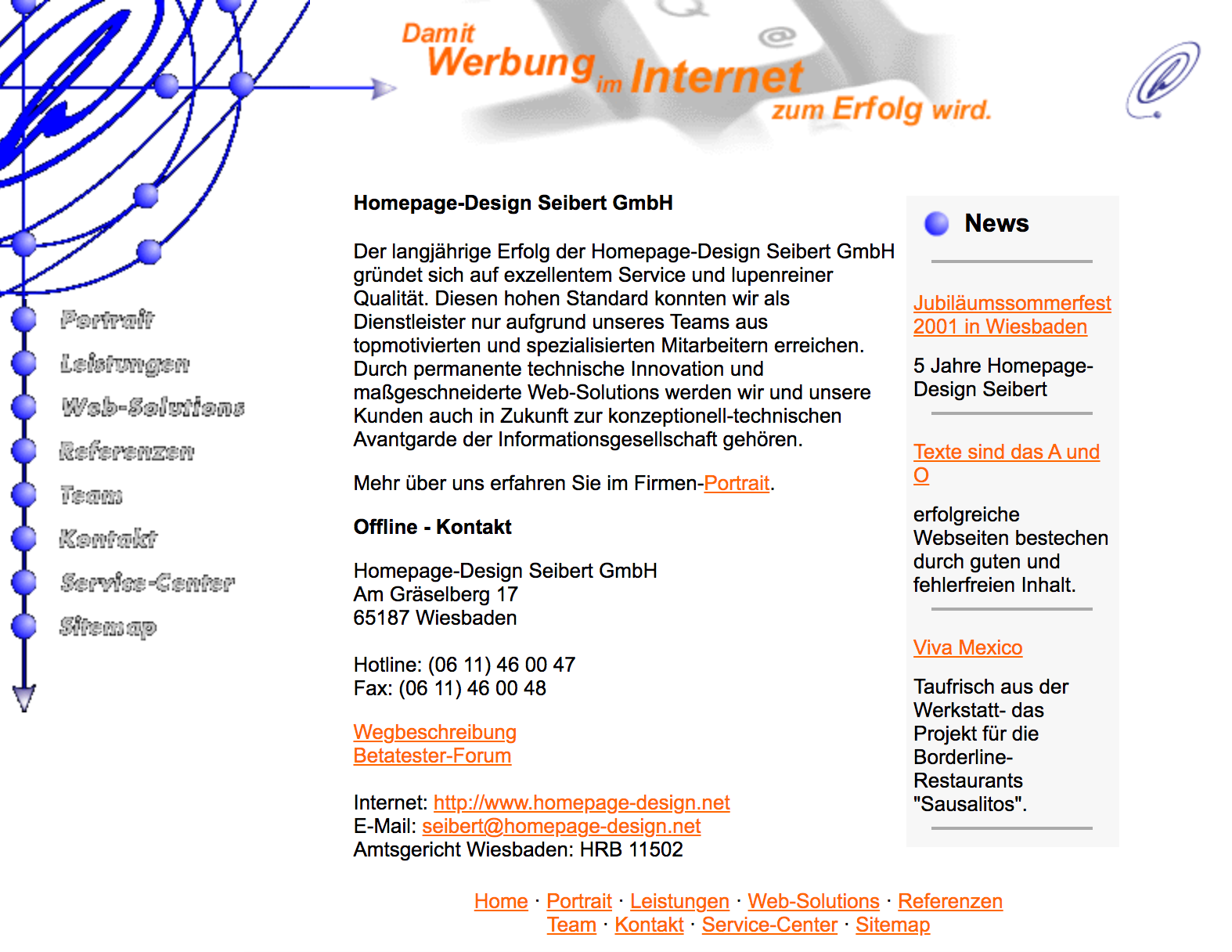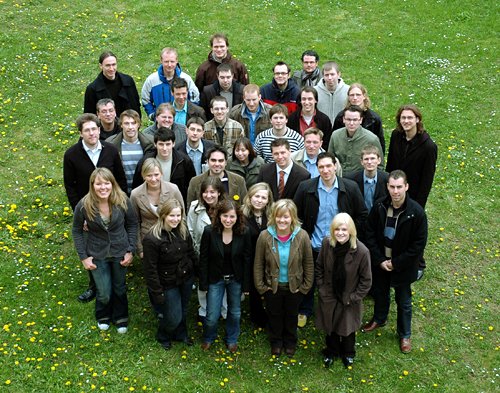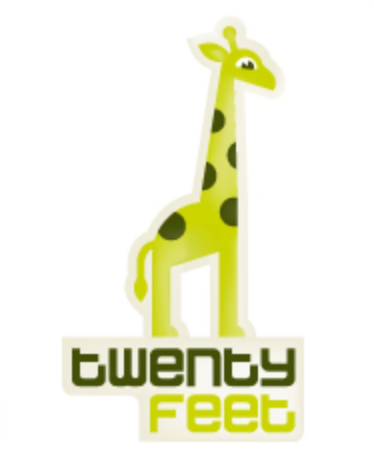The year is 1996. People surf the internet with 12k modems. A certain company called AOL puts floppy disks and CDs with access software not just in every computer magazine, but in every printed product they can get their hands on. For the first time, more emails are sent in the USA than regular "snail mail." Google's precursor BackRub has just appeared on peoples' monitors. Windows 95 celebrates its first birthday and little by little replaces the good old MS-DOS. The Chicago Bulls had a season unlike any other and finished with 72 points and Germany won the European Championships in soccer with Eilts, Sammer and Kuntz under their manager Berti Vogts.
This is also the year in which a then 17-year-old teenager named Martin launches a partnership called Homepage Design Seibert. To be more precise, December 5th 1996. It's not difficult to guess that this is what will later become Seibert Media GmbH. In other words:
Happy birthday to us - today, December 5th 2021 we're 25 years old! 😀
A quarter of a century is worth celebrating, don't you think? Especially in the software and IT industry where hundreds of thousands of companies are founded and just as many go out of business, and where products are created and discontinued.
Some colleagues that have been there since the start rub their eyes in wonder every now and then when they see what's become of that partnership: a software company with a multi-million turnover that has worked for dozens of DAX corporations like BMW, Bosch, Vodafone and Volkswagen. A company that has organized itself completely according to agile workflows and is now one of the most renowned companies in Germany for modern enterprise collaboration, and is one of the largest Atlassian partners in the world.
I’ve experienced 14 out of the 25 years at Seibert Media myself. Of course, there are a number of people with more years at this company under their belts, but I can well and truly say that I have become part of the furniture here.
Because of this fantastic anniversary, I'd like to give a quick review and take a completely subjective look back at a few things and developments that shaped the company.
A growing Blog
I started here in autumn 2007 as one of the first remote employees, because I was, and still am, mostly located at home in Potsdam, which is located near Berlin.
My job was to support this blog – and it still is. Meanwhile, we've published almost 3,500 articles and contributions, and I’ve had a hand in most of them either as an author, an editor or simply making operational adjustments.
But this shouldn't be about me, it's about this company. And the company I joined at the time was completely different to what it's now – from the business model to the internal structure and organization.
Popular anecdotes
Before I joined the company, I only heard about some of the popular anecdotes that exist– like when a young Martin Seibert who work up from a phone call from a customer and had a conversation with Mr. Hager about an ongoing web project - all the while in his pajamas. Or when Martin and Jo went around visiting companies in person to try to sell website projects. Or the ‘prize’ in a magazine we won – I think it was called the "Internet Magazin"... Anyway in this magazine, a project from Homepage Design Seibert was chosen as the worst website of the month. Well, many things are trial and error in the beginning right, but the company eventually started to rake in the success. 😉
The young company ambitiously grew and in 2002 we gained one of our first large customers. The company moved from a dorm room in Mainz to a more respectable area in Rheingau Palais located in Wiesbaden.
That is where the following picture was taken, the first staff picture that I got my hands on, and it actually shows most of the people who worked here at the time. This was taken around 2004.
The company moved from the Rheingau Palais to the LuisenForum in 2011, which is at the edge of the city center in Wiesbaden. Today, we have about 200 employees spread over three offices in Wiesbaden From 2022 there will even be four, because our new headquarters will open its gates next summer.
Learning from failure
Because things were looking good doesn't mean that nothing went wrong. From our subsidiaries, of which there were four in total over the years, none have really been able to take off. The network "new-in-town" didn't become a second Facebook, and "naturkostativ" didn't grow into the leading ecological portal on the internet.
And our product "TwentyFeet" was in fact a classic money destroyer where we invested a lot of money, but unfortunately, because we didn't consider any basic Lean Startup principles it didn’t work out.
TwentyFeet was quite a cool service-encompassing social media tracking platform. We built a large-scale, scalable product with all the trimmings. There was a strong corporate design and we even had a cute mascot. When it launched in 2011, our teams waited in anticipation for people to bust down our doors and snatch the credits from our hands – but that didn't happen.
Long story short: we fell in love with our solution, without knowing if there was even a problem worth solving. The dedicated Lean Startup Team, which was formed later on in the process, couldn't change much either, and so TwentyFeet became an expensive flop. We learned a lot from this, not only in the area of product development, but also about agile processes in the teams, or our experiences with cloud technologies.
A fundamental change
I jumped back and forth quite a bit in our company’s timeline, and now we'll go back to the year 2007. Fascinating fact: we introduced our first company wiki at that time! (It wasn't Confluence, but the open-source project TWiki.) This year was the start of a fundamental change.
When I joined, everything was focused on the classic offering of a B2B web service provider. We designed and built websites and corporate blogs; our design department developed corporate designs and print products; usability, SEO and online marketing were the big ticket items.
That gradually started to change, because it quickly became clear how important internal collaboration was for the companies’ success. Martin, in particular, recognized that it was something that customers could massively benefit from and that it was a product that could be sold. This resulted in the first wiki projects. Not too long after, Atlassian appeared on our radar with Confluence, followed by Jira, and the rest, as they say, is history. In 2011, we received the "Fastest Growing Partner" award from Atlassian, and nowadays, we are one of the most experienced and largest Platinum Solution Partners in the Atlassian ecosystem and develop our own large and successful Atlassian-based products.
Muddling through!
As I mentioned before: yes, I was at Seibert Media when specialist departments were the golden rule at Seibert Media. It was a time when we all had individual targets and projects were planned and implemented by Project Managers in the classical Waterfall model. It was quite a traditional approach.
That is until, under the leadership of Jo and Paul, Agile was introduced to the company and the first teams came into contact with Scrum. This didn't just change how teams worked together; it changed the whole company! Gradually, hierarchies were dissolved and bureaucratic hurdles were taken down. Quarterly targets were thrown in the trash and specialist departments turned into interdisciplinary teams. Those were very exciting times!
When Martin once explained to a customer what this "Agile" thing was exactly, he summed it up by saying: "Ah, you mean: muddling through!" Well we have "muddled our way through" and have become completely an agile organization that consists of self-organized, and autonomous teams. We make business decisions as a community (Agile Org) and we are on the way to becoming a network organization.
The product era
Today, we see ourselves first and foremost as a software development company. This originated in 2014, when a team from B. Braun Melsungen, a global medical products company, asked, "Can you turn Confluence into a real intranet, with news, profiles, and all that stuff?" Our answer, "well, of course!"
We have developed intranets based on Atlassian Confluence for over 50,000 people around the world. It was a completely new level and challenge! At the time, we didn't know it yet, but it led to the birth of Linchpin, our successful Confluence-based social intranet solution, which is now also available for the cloud.
During a hiking vacation, I once injured my foot and needed a bandage. I got a box of gauze bandages from the pharmacy. I briefly looked on the outside of the box and marveled: on it was that same company logo I’ve seen so many times during reviews and presentations – B. Braun Melsungen. "Oh, so that's who they are!" Since that eye-opening experience, I've been walking around paying more attention to everything around me! 😀

When you've injured your ankle badly while hiking in rough terrain, gauze bandages from B. Braun work wonders! 😉
By the way, in the year Linchpin was born, draw.io also joined - two ambitious developers with a wonderful product, but no network or marketing structures. This joint venture (after a somewhat rough start) has also become a great success story!
Consulting and moving images
Product developers or not - we continue to provide services and consulting. Although for a few years we preferred consulting via video conferencing. The rise of our video consulting (and our video production in general) grew in popularity. This was also one of the things I was able to actively help out with from the moment we started doing it.
We just held the Tools4AgileTeams conference, a two-day online event for over 2,000 virtual guests, with almost 80 talks and eight live stages. It was really cool, very professional, filmed with top-notch equipment and handled by qualified individuals, both in front and behind the scenes. This was quite different from what video production looked like just nine or ten years ago.
I hope Martin can get over the fact that I'm sharing this video with you all, which I had quickly put together during the occasion of another anniversary (subtitles are available in English):
You are currently viewing a placeholder content from Youtube. To access the actual content, click the button below. Please note that doing so will share data with third-party providers.
Evergreens
Let's conclude with a quick look at the historical numbers of the blog, the area where I spent most of my time working, and one of the most important platforms for sharing knowledge and information.
Unfortunately, there's no data from the beginning since we rebuilt our data tracking in 2013. But over the last eight years, these are our top 5 blog posts:
- IT log book: Linux – what are “CPU lockups”?
- Microsoft Word Online vs. Google Docs: Comparing Twelve Features
- How to annotate an image in Confluence
- Microsoft Excel Online vs. Google Sheets: Comparing Twelve Features
- Sample Intranet Survey for Employees Including Guidance, Tips, Links, and Explanations
That's a surprising first place, isn't it? But of course it makes sense that more generic articles that appeal to a broad audience are visited more.
We're unlikely to attract new Linchpin readers with information about CPU lockups, but it never hurts to look beyond the end of our own noses, and having a variety of themes is the trump card of this blog anyway.
And with that I would like to conclude this short, unstructured review. If you would like to find out more about the development of our company in chronological order, you can find what you are looking for in our Knowledge Base.
Well, here's to the next few years! Will it be another 25? Well, who really knows? Of course, there are many challenges ahead of us, especially as the world moves to the cloud. We will manage and go down this path together with our customers. We'll also need to juggle the balancing act between growth and dynamic robustness if we want to remain well-positioned in the software industry.
Change will continue to be part of us. We will try things out, succeed here, fail there, continue to learn a lot and keep adapting to changing requirements. I'm looking ahead optimistically, and I certainly plan to continue contributing to the success of this cool company for a long time to come. Happy Birthday! 😀






